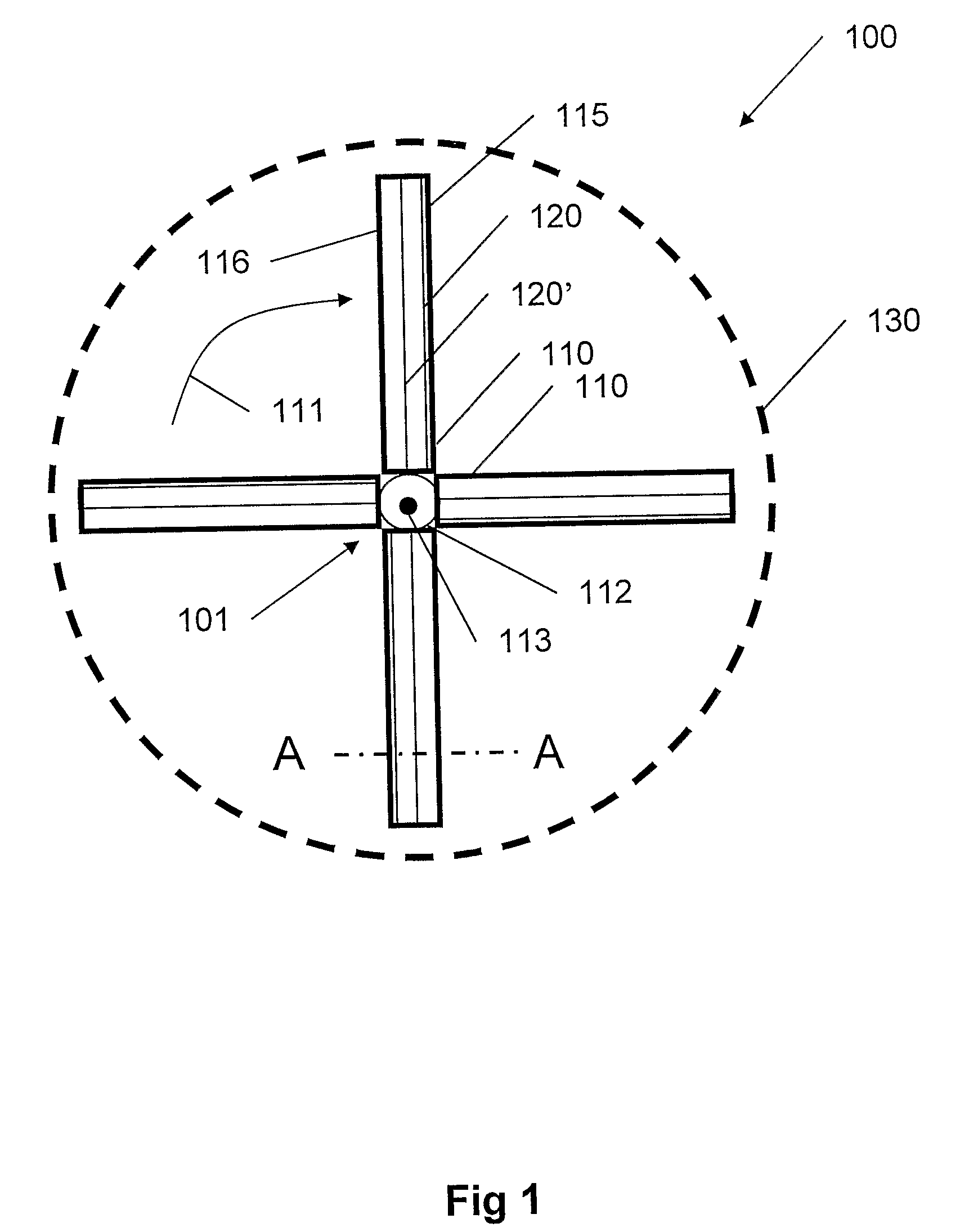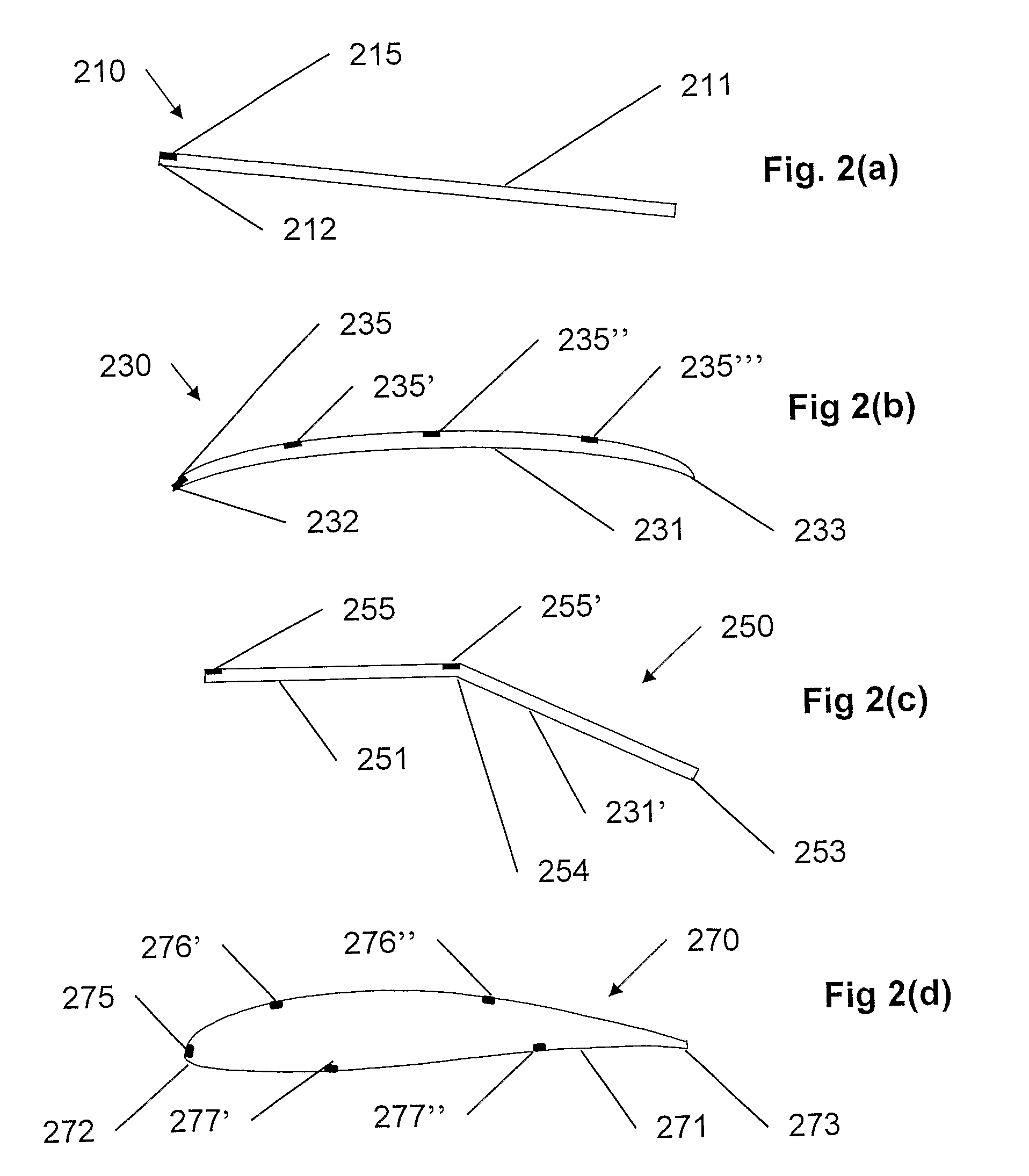Aerodynamic performance enhancements using discharge plasma actuators
a plasma actuator and aerodynamic technology, applied in the direction of air flow influencers, boundary layer controls, liquid fuel engine components, etc., can solve the problems of observing significant differences in the response to reduced frequency and duty cycles, and achieve the effect of improving performance, maintaining elevated endurance, and increasing the maximum lift coefficient of 0.4
- Summary
- Abstract
- Description
- Claims
- Application Information
AI Technical Summary
Benefits of technology
Problems solved by technology
Method used
Image
Examples
Embodiment Construction
[0093]The present invention relates to enhancing aerodynamic performance by using plasma actuators to control air flow. The invention has specific application to fan and ducted-fan performance and flow control at low Reynolds numbers. Dielectric barrier discharge plasma actuators are preferably used.
[0094]Before explaining at least one embodiment of the invention in detail, it is to be understood that the invention is not limited in its application to the details of construction and the arrangement of the components set forth in the following description or illustrated in the drawings. The invention is capable of other embodiments or of being practiced or carried out in various ways. Also, it is to be understood that the phraseology and terminology employed herein is for the purpose of description and should not be regarded as limiting.
[0095]The drawings are generally not to scale.
[0096]For clarity, non-essential elements were omitted from some of the drawings.
[0097]As used herein, ...
PUM
 Login to View More
Login to View More Abstract
Description
Claims
Application Information
 Login to View More
Login to View More - R&D
- Intellectual Property
- Life Sciences
- Materials
- Tech Scout
- Unparalleled Data Quality
- Higher Quality Content
- 60% Fewer Hallucinations
Browse by: Latest US Patents, China's latest patents, Technical Efficacy Thesaurus, Application Domain, Technology Topic, Popular Technical Reports.
© 2025 PatSnap. All rights reserved.Legal|Privacy policy|Modern Slavery Act Transparency Statement|Sitemap|About US| Contact US: help@patsnap.com



